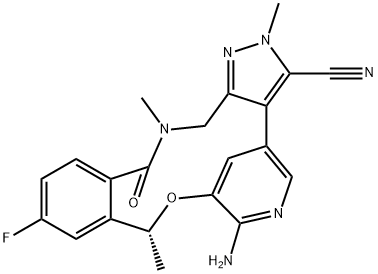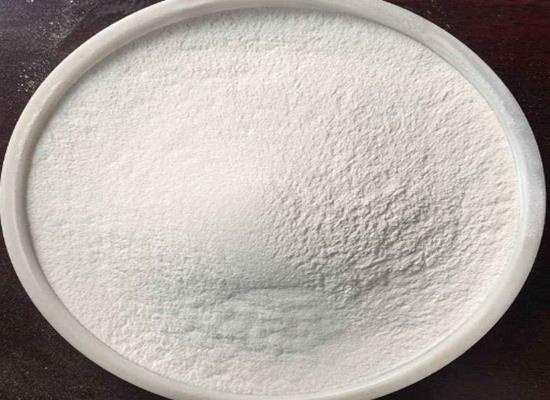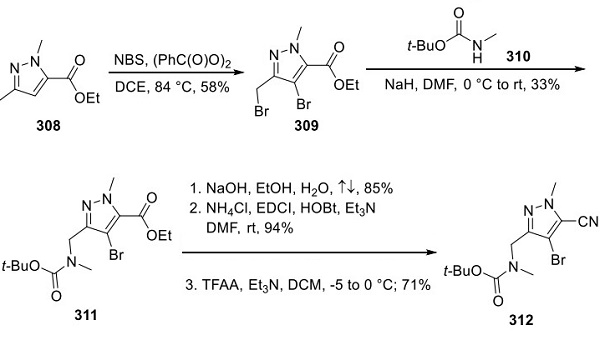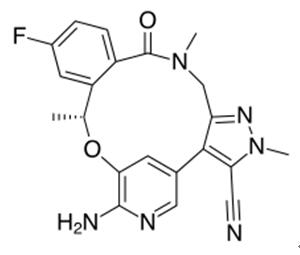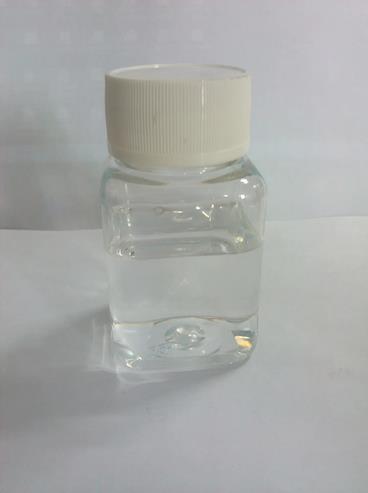Lorlatinib (PF-06463922): Pharmacodynamics, pharmacokinetics and adverse events
General description
Lorlatinib (PF-06463922) is an oral, ATP-competitive small molecule inhibitor of receptor tyrosine kinases, anaplastic lymphoma kinase (ALK) and C-ros oncogene 1 (ROS1), developed by Pfizer for the treatment of ALK-positive non-small cell lung cancer (NSCLC). Chromosomal rear- rangements in the ALK and ROS1 genes lead to expression of constitutively activated fusion kinases (e.g. EML4-AKL), resulting in the activation of downstream signalling pathways that may play a role in the development and progression of NSCLC. Lorlatinib (PF-06463922) is a macrocyclic tyrosine kinase inhibitor (TKI) specifically designed to overcome TKI-resistant ALK mutations and to penetrate the blood-brain barrier, although acquired resistance to Lorlatinib (PF-06463922) can develop. Its appearance is as follows:
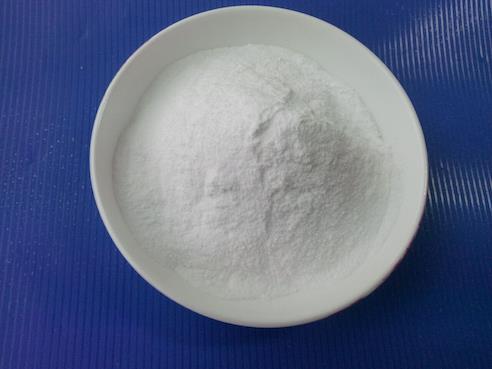
Figure 1 Appearance of Lorlatinib (PF-06463922).
Pharmacodynamics
In biochemical assays, Lorlatinib (PF-06463922) showed subnanomolar potency with an inhibitory constant (Ki) value of < 0.07 nmol (and greater potency than crizotinib, ceritinib and alectinib) against wild-type ALK [1]. It retained potency against crizotinib-resistant ALK mutants (Ki < 0.1–0.9 nmol), including the highly resistant G1202R. Lorlatinib (PF-06463922) was more potent than crizotinib in inhibiting ALK-driven cell growth in lung cancer cell lines engineered to overexpress crizotinib-resistant ALK mutants (G1269A and L1196M) and in cell lines derived from patients with acquired resistance to crizotinib, ceritinib or alectinib. Lorlatinib (PF-06463922) showed a dose-dependent antitumour effect (with superior tumour growth inhibitory effect than crizotinib) in ALK fusion kinase-driven subcutaneous tumours in mice xenograft models. Of note, Lorlatinib (PF-06463922) induced superior regression of intracranial EML4-ALK tumours (a NSCLC brain metastasis model) and prolonged survival in mice, compared with crizotinib or alectinib. The enhanced activity of Lorlatinib (PF-06463922) in the brain metastasis model was attributed to its ability to cross the blood-brain barrier [1].
Pharmacokinetics
At steady-state, Lorlatinib (PF-06463922) maximum plasma concentration (Cmax) increased dose proportionally and the area under the concentration-time curve increased slightly less than dose proportionally over a dose range of 10–200 mg (0.1–2 times the recommended dosage) taken orally once daily [2]. Lorlatinib (PF-06463922) was rapidly absorbed after oral administration, with a median time to Cmax of 1.2 h following a single 100 mg dose and 2 h at steady state following 100 mg once daily. The mean absolute bioavailability of oral Lorlatinib (PF-06463922) was 81%. Food had no clinically meaningful effect on Lorlatinib (PF-06463922) pharmacokinetics [2]. With 100 mg once daily, lorlatinib exposure exceeded the predicted effective concentrations required for inhibition of wild-type and mutant ALK, including G1202R [3].
In vitro, 66% of Lorlatinib (PF-06463922) was bound to plasma proteins [2]. The blood to plasma ratio was 0.99 and the cerebrospinal fluid to plasma ratio was 0.75 [3]. The mean steady state volume of distribution of Lorlatinib (PF-06463922) was 305 L following a single intravenous dose. In vitro studies indicate that Lorlatinib (PF-06463922) is metabolized primarily by CYP3A4 and UGT1A4. Following a single oral 100 mg dose of radioactive l Lorlatinib (PF-06463922), 48 and 41% of the radioactivity was recovered in the urine and faeces, respectively (< 1 and 9% as unchanged drug). The mean plasma half-life of Lorlatinib (PF-06463922) was 24 h. Lorlatinib (PF-06463922) oral clearance increased at steady state compared to a single 100 mg dose (11 to 18 L/h), suggesting autoinduction [2].
Adverse Events
Oral Lorlatinib (PF-06463922) 100 mg once daily had a manageable tolerability profile in 275 patients with ALK- or ROS1-positive NSCLC in the NCT01970865 trial (median treatment duration 8.3 months; median relative dose intensity 98.5%) [4]. Treatment-related adverse events (TRAEs) were managed by dose interruptions (30% of patients) or dose reductions (22%); oedema was the most common TRAE leading to dose interruption (6%) or reduction (7%). Only 3% of patients discontinued treatment because of TRAEs, which included affect lability, cognitive disorder, confusional state, auditory hallucination, visual hallucination, hydrocephalus, leukocytosis, pneumonitis and tinnitus (each reported in one patient) [4]. The US prescribing information for Lorlatinib (PF-06463922) contains warnings regarding the risk of serious hepatotoxicity when used with strong CYP3A inducers, CNS effects, hyperlipidaemia, atrioventricular block, interstitial lung disease/pneumonitis and embryo-foetal toxicity [2]. Local prescribing information should be consulted for details on the management of these adverse events.
References
[1]Zou HY, Friboulet L, Kodack DP, et al. PF-06463922, an ALK/ ROS1 inhibitor, overcomes resistance to first and second gen- eration ALK inhibitors in preclinical models. Cancer Cell. 2015;28(1):70–81.
[2]Pfizer. Lorbrena? (lorlatinib): US rescribing information 2018. https://www.fda.gov. Accessed 26 Nov 2018.
[3]Shaw AT, Felip E, Bauer TM, et al. Lorlatinib in non-small-cell lung cancer with ALK or ROS1 rearrangement: an international, multicentre, open-label, single-arm first-in-man phase 1 trial. Lan- cet Oncol. 2017;18(12):1590–9.
[4]Solomon BJ, Besse B, Bauer TM, et al. Lorlatinib in patients with ALK-positive non-small-cell lung cancer: results from a global phase 2 study. Lancet Oncol. 2018;19(12):1654–67.
You may like
Related articles And Qustion
See also
Lastest Price from Lorlatinib manufacturers

US $1.00/kg2025-07-21
- CAS:
- 1454846-35-5
- Min. Order:
- 1kg
- Purity:
- 99.99%+
- Supply Ability:
- 100ton

US $0.00-0.00/mg2025-05-26
- CAS:
- 1454846-35-5
- Min. Order:
- 10mg
- Purity:
- 99%+ HPLC
- Supply Ability:
- 1000
